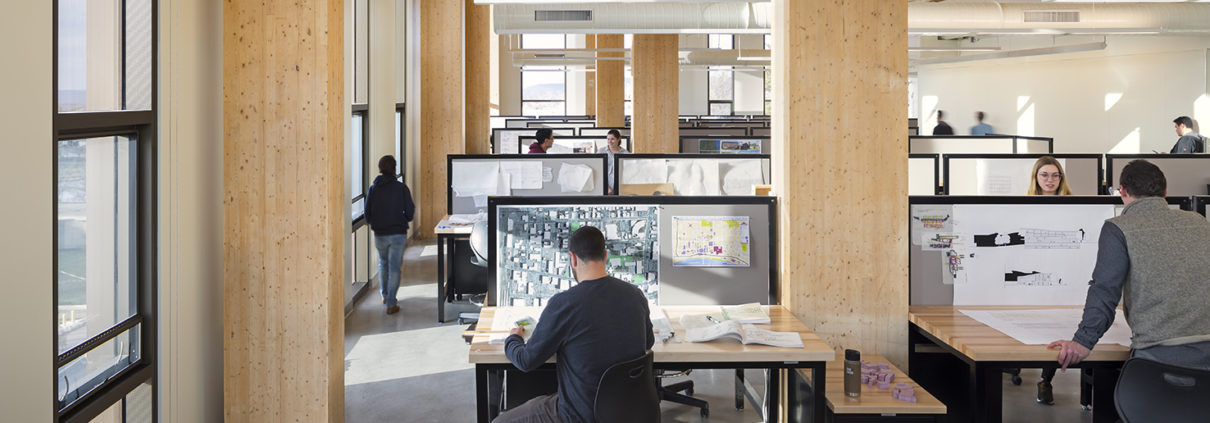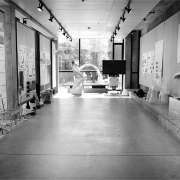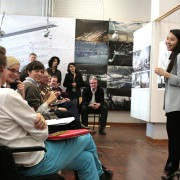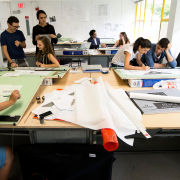How to Select an Undergraduate Program
DEGREE TYPES
When picking a school, there is an ideal match for everyone. Our goal is to help you find that match. First, find out if the school offers professional or preprofessional degrees. Professional degree at the undergraduate level is the Bachelors of Architecture, or the B.Arch. The B.Arch. is an accredited degree that typically takes 5 years of full time study, and qualifies you to take the Architect Registration Examination® (ARE®). Before taking the ARE you need to enroll in an internship program. This usually takes about 3 years, but you can do much of your internship while still in school.
A four year major in architecture is considered a preprofessional degree, and requires you to later receive a Masters of Architecture, or M.Arch., in order to become a licensed architect. The Masters track also requires an internship. Some schools offer an undergraduate preprofessional degree, specifically designed to be followed by a Masters degree at the same institution. These programs are typically 6 years in total and commonly referred to as the 4+2 program. The last 2 years in this program, at the Masters level, constitutes the accredited portion.
It’s a good idea to fully understand the accreditation status of a program before you apply. Architecture degrees can be complicated. So try to find out as much as you can before you apply, and don’t be afraid to ask questions.
PERSONAL GOALS
You should spend some time thinking about both your professional and personal goals. If you have always wanted to be an architect, the B.Arch. might be the fastest way for you to get your license. But if you’re interested in design, but not sure which aspect, that’s okay too. If that’s the case, you might consider a B.Arch. program that offers the opportunity to transfer into other programs at the same school after 1 or 2 years, such as interiors, or planning. You might also consider a preprofessional program in architecture or other design related disciplines. This course of study will provide you with a broad liberal arts education to prepare you to later study architecture at the Masters level, in order to get your license.
PERSONAL PREFERENCES
On the personal side, you might think about your ideal setting for learning. This might be at a large public university or a small private college. A large school might offer a great diversity of programs and studio offerings, while a small school might specialize in one or two things, such as sustainability or community design. Whether those schools are in a city or small town, might also matter to you. An urban university can offer better access to internships, while a school in a small town might offer a quality of life better suited to you. Not sure where to start? Take our Quiz on the homepage.
FINANCES
This is where finances come into play. Public universities are designed to be affordable, especially if you live in a state that the university is in. Many public universities publish their return on investment to put the cost in context. You might want to look at those. Urban schools might have a higher cost of living, but schools in a small town might compel you to bring a car. You should also find out what kind of teaching assistantships a school offers and what sorts of scholarships, loans, and grants you can apply for. Ask if there is an honors program and find out what the qualification requirements are.
PHILOSOPHY
Most importantly, you want to find out what the school’s philosophy is. What is its specialty? What does it emphasize? Some schools, especially bigger ones, might have more than one specialty. Try to find out what a school is known for and see if that appeals to you. You can start by exploring StudyArchitecture.com/where-to-study and visiting school websites. Most schools have videos or galleries showing student work. Visit IMadeThat.com to see student and faculty work from a variety of architecture schools and decide what appeals to you. This gives you a flavor of what the various institutions are all about. Don’t forget to read the school’s mission statement, or message from the dean or chair. Also, look at a school’s catalog and read some of the course descriptions. This is where you will find out what the school’s real focus is. Most schools with a graduate program allow undergraduate students to take graduate courses one you reach a certain level. Here are some other questions you might ask: Does the school provide opportunities to design and build real structures? Are there connections with local communities, where you can apply your design skills while still in school? Does the school have a coop or internship program? Is there a program for study abroad? If so, where and for how long? Understanding each of these opportunities gives you a better idea of what the school’s philosophy is.
THE PROFESSION
In the end, architecture is a profession and the school you choose will prepare you. Each school balances the technical and the artistic in different ways. The community of disciplines that an architecture program surrounds itself with tells you a great deal about it. You might want to ask what the school’s connection is to engineering or construction. Are there interior and industrial design programs that share faculty, and can you take one of those courses? Are there other programs, such as theater or fashion, that you want to take courses in? If those courses are at a nearby sister school, how easy is it to enroll? Can you double major? Some schools allow you to customize your degree. It’s a good idea to find out to what your options are before applying if that is important to you.
TECHNOLOGY
Find out how the school you are considering teaches digital media. Will you have to rely on your laptop, or will you have access to a powerful computer at your desk with all the software you need? Does your school teach you to produce elaborate renderings or does it also focus on data analysis? What kinds of software are available? Building information modeling, often referred to as BIM, is increasingly becoming a necessary tool in the profession. Based on how and where you want to practice, you may want to find out a school’s approach to BIM. How a school teaches an awareness of digital tools can significantly impact your future.
FACULTY
Find out who will be teaching you. One benefit of a large urban school is that it draws working professionals from a wide range of backgrounds. This might be adjunct professors who teach one course or studio. These professionals bring the very latest practice approaches and might expose you to the widest range of ideas. A college in a smaller town might have a higher range of new professors who each bring specific design or research interests. See if you might have the opportunity to intern with them. Some of the schools might bring in faculty for short but intense bursts of activities. These individuals will have a significant impact on shaping your future, so it helps to get an idea of who they are before applying.
FACILITIES
Architects are shapers and custodians of the physical environment. We strongly recommend visiting the school you are applying to. Spend some time in the facilities. Walk through the studios. Try to sit in on a final review. Is there a gallery? What kinds of exhibits does it show? Also, visit the library. Take note, is it in the school or across campus? Look at what kind of shop facilities there are. School increasingly include more digital tools like laser cutters and 3D printers. Ask about their availability and if there is a cost associated with using them. Some architecture schools have relationships with other university departments and their resources. Ask how accessible those might be. Architecture school is going to be your home away from home for quite some time. So think about whether it’s a good fit.
STUDIO
During your time in architecture school you will probably be spending most of your time in studio, so try and visit it while school is in session. Things you might look for are: What is the quality of the space? How much space will you have allocated to you? Will you have room to build large models?
STUDENTS
When you visit the school and studios, try to talk to as many students as you can. It is often said that you learn as much from your classmates as you do from your professors. Get a feel for how large the student population is and how diverse they are. Explore the school’s social media to see what students are doing and talking about. Many schools have student organizations like American Institute of Architecture Students, the student chapter of the American Institute of Architects. AIAS chapters do lots of things like organize lectures, workshops, and lead field trips. Try to find out about other organizations like Tau Sigma Delta and Alpha Rho Chi. These are honor societies, and some are residential.
****
Be sure to explore our Where to Study section to learn more about the schools and check out the What to Know page for more information on studying architecture.








